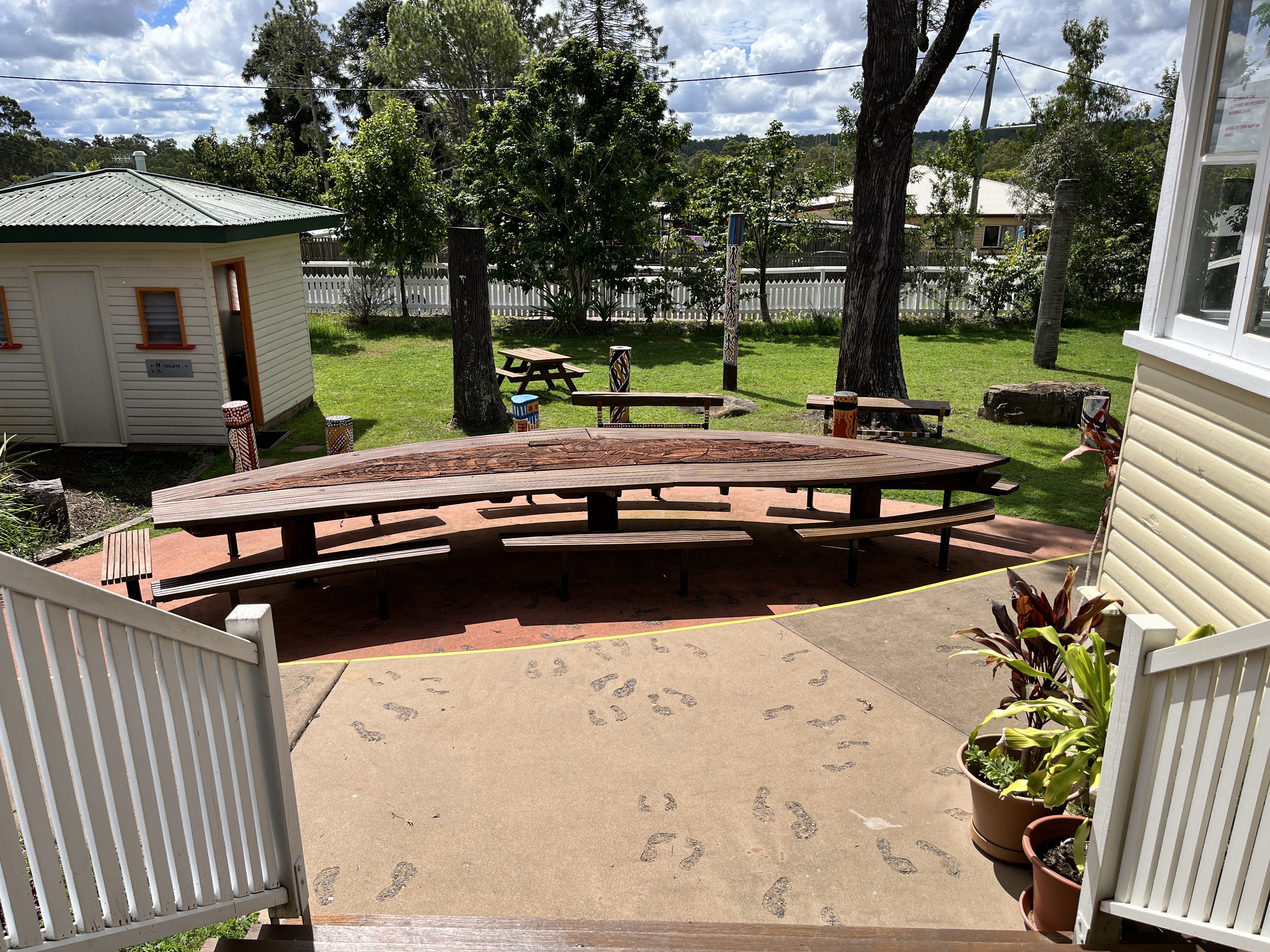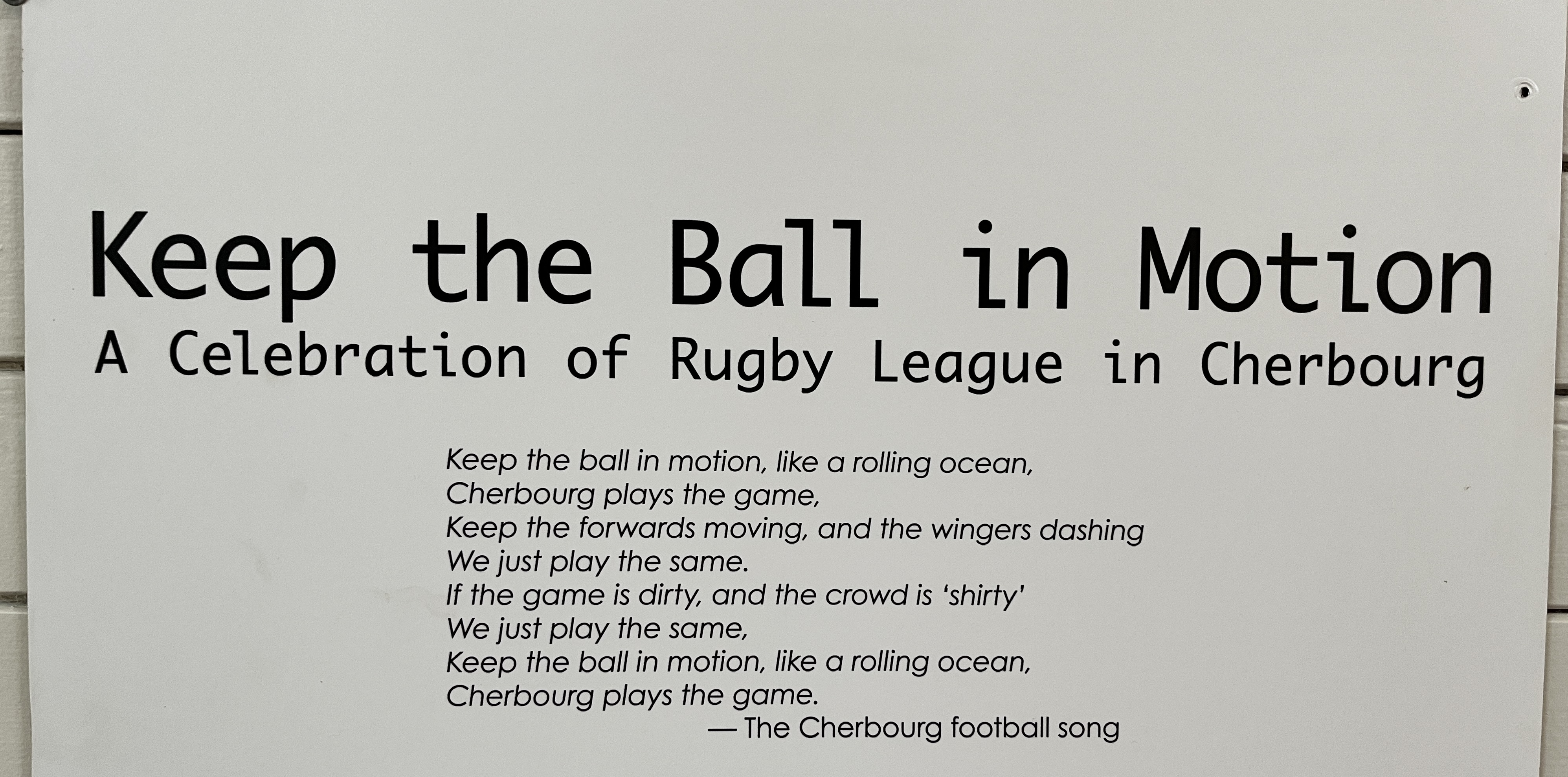Community, Courage, Cherbourg
My connection with Cherbourg began when I read the inspiring memoir Is That You Ruthie? By Ruth Hegarty, a former dormitory girl.
Ruth’s story seamlessly balances the harsh reality of growing up in the Reserve with the quirky innocence of being a child. This juxtaposition set the tone of what I would later find when visiting the Ration Shed Museum, which I was honoured to be invited to visit by Nicola Tizzard, Museum Manager.
On arriving at the Ration Shed Museum I was greeted by a sign declaring “Notice: it is an offence to enter this reserve without authority. Every person entering this reserve is required to report to the superintendent, action will be taken against offenders – the Superintendent” which I must admit did its job by stopping me in my tracks. The Ration Shed Museum’s first example of embracing the historical setting in which their stories are bravely told.

The Ration Shed Museum took its name from the first building you encounter when starting your journey through the museum – the Ration Shed. As the name suggests, it was the original building used to distribute rations to the community in Cherbourg (then Barambah). I’m told it wasn’t originally in its current location, instead was moved by sisters Sandra Morgan and Lesley Williams back in 2004 when they began the project of establishing a historical precinct. Using the Ration Shed building inspired members within the community to use other relevant historical buildings such as the Superintendent’s Office, Boys Dormitory, and Domestic Science Building to tell their stories. You’ll find them there today, as a space of painful truth-telling, yet celebratory survival.
I was fortunate to be taken on a tour by Mindy Fisher, who gave not only an informed experience but most importantly a personal one. I was privileged to hear her connections with Cherbourg, including the story of her grandfather who was a ‘Boy from Barambah’ and fought in World War One. Mindy offered great insight into the artworks dotted around the precinct, the footprints outside the Superintendent’s Office for instance, a reminder of the painstaking hours some would have to wait to get a permit to leave the Reserve.
Also pictured above is the stunning carved table by the late Rocko Langton depicting the native animals which represent the original locations of some of the tribes which were forcibly removed to Cherbourg.
Mindy then took me through the rest of the exhibitions: Domo – life in the Dormitories, Cherbourg in the 1930s, Barambah – Cherbourg arts and crafts, Strong Women Shadow Boxes, Barambah Pottery 1970s and 80s, Many Threads – Women’s Stories, ending in Play the Ball – sport in Cherbourg. Throughout these exhibitions were heartbreaking stories encompassing the meaning of resilience. It was lovely having Mindy present to provide a safe space to reflect on some of the themes I was being confronted by.
As mentioned, I ended my tour in Play the Ball – sport in Cherbourg, which was such a positive space to finish, celebrating the place Cherbourg is today. And what better way to do it than displaying sporting excellence through signed NRL shirts, ginormous trophies, and fantastic stories of Olympic medals. I kept thinking how much my late father, Rod would have loved this exhibition being such a huge NRL fan, particularly of the underdogs.
Along with the exhibition spaces, the Ration Shed Museum also offers space for community. These include a space for Elders, a pottery studio (pieces are sold in the gallery shop – highly recommend!), Yarning Circles, and overall stunning grounds where groups are welcomed to learn about this important history.

Leaving Cherbourg, I was once again reminded what makes it such a special place today – “Many Tribes, One Community”.
He aha te mea nui? Māku e kii atu, he tāngata, he tāngata, he tāngata.

Posted on 29 April 2024, in Uncategorized. Bookmark the permalink. 2 Comments.






Fantastic, should be more of that history seen by everyone.
Helen Kindt.
I couldn’t agree more Helen.
Thanks for reading.
Chantal